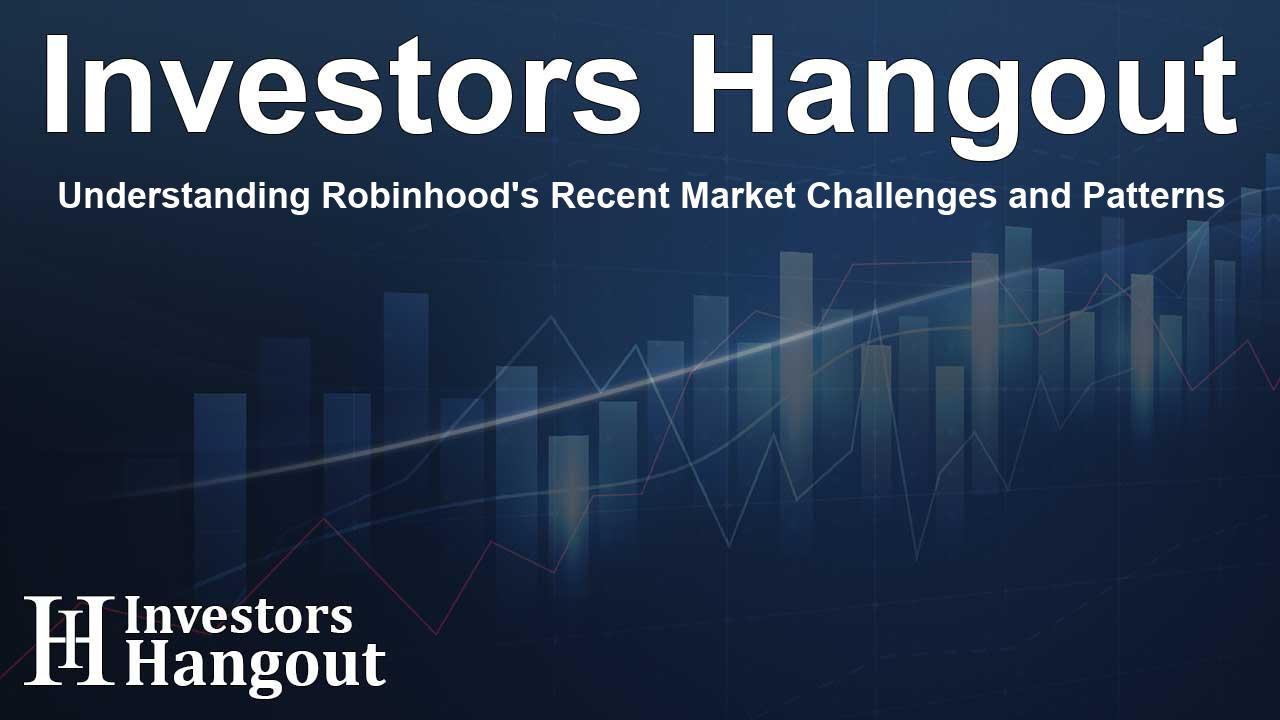Understanding Robinhood's Recent Market Challenges and Patterns

Navigating Market Dynamics: Robinhood's Journey
In the wake of the meme stock phenomenon that captivated investors in early 2021, Robinhood (NASDAQ: HOOD) launched its initial public offering (IPO) in late July 2021. The strategy appeared promising at first, as the stock price soared, more than doubling in a short period. However, the excitement surrounding meme stocks like GameStop and AMC was short-lived, leading to a substantial decline in their market values and pulling Robinhood down with them.
Analyzing Robinhood's Stock Decline
From early August 2021 until mid-June 2022, Robinhood's stock suffered a staggering 92% drop, plunging from an all-time high of $85 to a low of just $6.81 per share. This dramatic downturn is one of the reasons coverage of Robinhood has been limited, mainly because identifying a dependable Elliott Wave pattern during such a tumultuous sell-off can be quite challenging. Yet, over the past couple of years, as the company's stock price began to stabilize, a possible Elliott Wave pattern has started to take shape.
The Impulse Wave Recovery
The upward movement from the low of $6.81 can be interpreted as an almost complete impulse wave, characterized by five distinct phases, labeled (1)-(2)-(3)-(4)-(5). Within this structure, the market's adherence to the principle of alternation is evident. The second wave took the form of an A-B-C running flat correction, while the fourth wave experienced a sharp and significant sell-off.
Market Trends and Predictions
Fortunately, the sell-off wasn't drastic enough to breach the peak of the first wave, allowing the impulse pattern to remain valid. This situation leads us to speculate that the current price surge could represent the fifth and final wave of this pattern. According to Elliott Wave theory, it is expected that after wave (5) surpasses the height of wave (3), a corrective phase comprising three waves in the opposite direction will likely ensue. Such corrections typically reverse much, if not all, of the gains made during the fifth wave, potentially bringing downside targets to around $15 per share into focus.
Valuation Considerations
Further complicating the outlook for Robinhood is its notably high price-to-earnings (P/E) ratio, currently at 33. This elevated valuation may diminish the comfort level for investors, raising concerns about the stock's sustainability in the competitive financial landscape.
The Future of Robinhood in a Changing Market
As investors reflect on Robinhood's evolving position in the stock market, it is crucial to monitor how both the broader market trends and specific company movements impact its stock performance. With the resurgence of trading activities and the constant evolution of market dynamics, Robinhood will need to navigate these challenges carefully to maintain investor confidence and ensure growth.
Frequently Asked Questions
What led to Robinhood's significant stock decline?
The significant decline in Robinhood's stock was primarily influenced by the unsustainable nature of meme stocks, leading to a dramatic drop in market value.
How does the Elliott Wave theory apply to Robinhood's stock?
The Elliott Wave theory suggests that stock price movements can be categorized into patterns, which can help forecast future price movements. Robinhood's stock has appeared to follow an impulse wave pattern as it recovered from its lows.
What are the potential future targets for Robinhood stock?
Future downside targets for Robinhood stock may hover around $15 per share, particularly after the anticipated corrective wave follows the fifth wave of the current impulse pattern.
What does Robinhood's high P/E ratio indicate?
Robinhood's high P/E ratio of 33 may imply that the stock is overvalued compared to its earnings, which can be a concern for potential investors.
How can investors track Robinhood's stock performance?
Investors can monitor Robinhood's stock performance by watching for changes in market trends and economic indicators that might impact the financial services sector.
About The Author
Contact Kelly Martin privately here. Or send an email with ATTN: Kelly Martin as the subject to contact@investorshangout.com.
About Investors Hangout
Investors Hangout is a leading online stock forum for financial discussion and learning, offering a wide range of free tools and resources. It draws in traders of all levels, who exchange market knowledge, investigate trading tactics, and keep an eye on industry developments in real time. Featuring financial articles, stock message boards, quotes, charts, company profiles, and live news updates. Through cooperative learning and a wealth of informational resources, it helps users from novices creating their first portfolios to experts honing their techniques. Join Investors Hangout today: https://investorshangout.com/
The content of this article is based on factual, publicly available information and does not represent legal, financial, or investment advice. Investors Hangout does not offer financial advice, and the author is not a licensed financial advisor. Consult a qualified advisor before making any financial or investment decisions based on this article. This article should not be considered advice to purchase, sell, or hold any securities or other investments. If any of the material provided here is inaccurate, please contact us for corrections.
